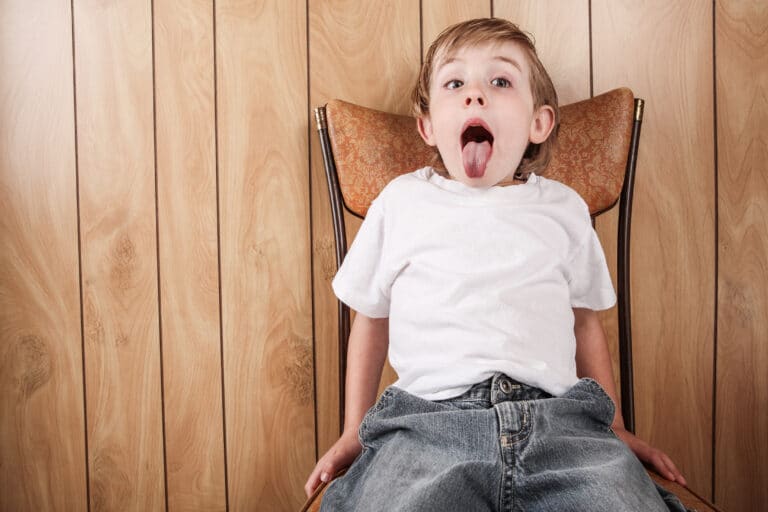Should I use Time Out?
There is a lot of contradictory advice out there about Time Out as a parenting strategy. Should parents use it? Does it work? Is it harmful? At what age should I use Time Out? Time Out has certainly had a bad press recently, but what does the evidence actually say? And what are the alternatives? (You shouldn’t believe everything you read on the internet!). So, to help you cut through the opinions and make an informed decision, I have pulled together the research and arguments, alongside some links to trustworthy explanations. Here’s what you need to think about:
What’s the theory behind Time Out?
Time Out is a short name for ‘time out from positive reinforcement’. As a parenting strategy, it was developed in the 1960s as a non-hurtful alternative to harsh discipline methods such as smacking. The idea is that children spend a short period (one to five minutes depending on their age) away from rewarding stimuli such as play and attention. When used in response to negative behaviour, this short removal period gives children (and parents) an opportunity to calm down. It also takes away any positive rewards for children’s behaviour. Which should make it less likely that children will repeat that behaviour in the future.
Why is Time Out recommended?
Time Out is typically recommended as a strategy of last resort for responding to aggressive behaviour. It provides parents with a solution in those big moments when both parents’ and children’s emotions might be in danger of getting out of hand. By requiring children to sit quietly, it helps them practise regulating their big emotions and calming themselves down. And it sends a clear signal to children that aggressive behaviour is unacceptable.
What’s the evidence?
Time Out has been extensively researched through randomised controlled trials and the data on its effectiveness (when used calmly as part of a planned strategy within the context of a loving parent-child relationship) is clear and consistent. It is included as a strategy in all the major positive parenting courses (such as Triple P and Incredible Years). These courses have reached stringent research criteria and are recommended by the World Health Organisation (WHO) as well as national bodies such as the UK’s National Institute of Health and Care Excellence (NICE).
 What are the arguments against?
What are the arguments against?
There are a variety of different arguments made against Time Out. For example, that it damages parent-child attachment and/or relationship. That it creates trauma or stress for children by isolating them. That it is shaming. And that it makes children bury their emotions rather than supporting emotional intelligence.
One of the first major psychologists to criticise the strategy was Daniel Siegel. His article in TIME magazine in 2014 (“Time-Outs Are Hurting Your Child”) drew upon brain imaging evidence to show that children’s brains during Time Out showed electrical patterns similar to those of children experiencing physical pain. Dr Siegel quickly published a clarification stating that the research supported the effectiveness of Time Out when used correctly and that there was no evidence that short removal periods caused trauma or damaged relationships. However, Siegel argued that, in practice, parents often use Time Out inappropriately. They use it too often, or for too long, or in anger and that this poor implementation was ineffective and undesirable.
Evidence from brain imaging is often cited to argue that Time Out causes trauma in children which is indelibly imprinted in their developing brains and shapes their future responses to stress. However, the only wide-scale longitudinal evidence we have of the effects of lack of attention and/or isolation on children’s brains is based on cases of severe neglect and abuse (such as Romanian orphanages) rather than the use of very short periods of withdrawal of attention within the context of a loving and positive family.
What’s Time In?
Time In has been proposed as an alternative to Time Out. Rather than withdrawing attention from children and requiring them to calm down by themselves, during Time In parents stay with children and establish a connection with them by acknowledging their emotions, reassuring them and soothing them. Once the child is calm, the parent discusses their behaviour and redirects them to a positive alternative. The focus is on creating a learning experience through connection.
Lots of parents find the philosophy of Time In very appealing. But, as yet, there have been no randomised controlled trials examining its efficacy in practice. Common concerns that have been raised about Time In are that it might accidentally reward children’s behaviour with lots of attention (therefore making it more likely that they will repeat that behaviour). And, that it is simply not practical for parents to sit for long periods calming a child – especially when there may be other children in the family to attend to. Some psychologists have argued that Time In doesn’t help children learn to regulate their emotions independently. Many professionals worry that it sets parents up to fail by expecting levels of calmness and patience that are hard to maintain in the face of aggressive or very challenging behaviour.
How to use Time Out effectively (and what not to do)
Lots of parents say they find Time Out a really useful strategy. But if you are going to use it, then it is very important that you are clear on exactly how to implement it. Here are some very important do’s and don’ts.
- Don’t reach for Time Out at the drop of a hat. It should be used as a strategy of last resort for serious behaviour.
- Time Out works best for children from about two and a half years to eight years old.
- Time Out works best when it is contrasted with lots of positive attention for the right behaviour within the context of a loving and positive relationship.
- Don’t spring Time Out on your child in the heat of the moment. It should be explained to children in advance. Talk your child through the process when everything is calm. You can sit them down and explain that from now on, if they do something aggressive, they will need to come and sit in a particular place for a couple of minutes. Physically walk them through it so they know what to expect and talk about what type of behaviour will result in Time Out.
- Don’t wait until you are angry or wound up. Step in early and use it calmly and in a planned way. Explain to your child why they are being asked to do Time Out and how long they need to be quiet for.
- After your child has calmed down, use reflective dialogue to talk about their behaviour and direct them towards an alternative.
So, should I use Time Out?
Ultimately, parents can only do our best. Occasionally putting a tantruming child in a safe space for two minutes and waiting for them to calm down will not make you a bad parent and it is not going to damage your child for life. And it gives imperfect parents a much-needed breathing space to keep ourselves calm too. But, equally, Time Out is not an obligatory strategy. If you are able to guide your child towards making good choices about their behaviour without using it, then that’s great. What children really need from parents is love and clear boundaries – exactly what that looks like for you and your child, only you can decide.
If you are struggling with your child’s behaviour and want some support, you might like to check out our online positive parenting course or see our options for private parenting coaching.

 What are the arguments against?
What are the arguments against?




